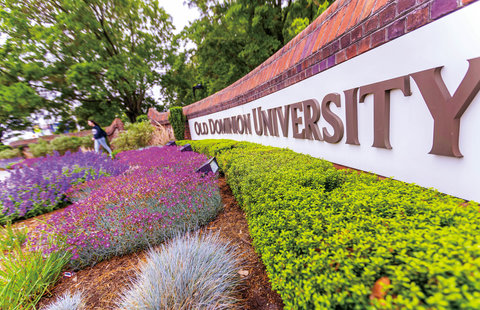Further your background and expertise with a PhD in modeling and simulation. This is a rigorous research program designed to train individuals for careers in teaching and research in the public or private sector. Students will have the opportunity to work with our faculty on research projects and gain experience solving real world problems.
Program Highlights
-
Modeling and Simulation Engineering is creating a design or hypothesis and testing it in real-world conditions through: Graphical and Mathematical Models, Virtual Reality Simulations, Serious Gaming, Computer Programming, 3-D Printed Models, Statistical Analysis
-
Internships in areas related to the program are available
-
Students are encouraged to assist with faculty research projects and to present their own research at regional, national and international professional communication associations
-
Opportunities to develop study abroad programs are available
Careers
Check out these ideas from ODU's Center for Career & Leadership Development and the Occupational Information Network (O*NET). A median salary is a midpoint of what people typically earn—half of those surveyed earned above the median salary, and half earned below.
Software Developers, Applications
Develop, create, and modify general computer applications software or specialized utility programs. Analyze user needs and develop software solutions. Design software or customize software for client use with the aim of optimizing operational efficiency. May analyze and design databases within an application area, working individually or coordinating database development as part of a team. May supervise computer programmers.
Web Developers
Design, create, and modify Web sites. Analyze user needs to implement Web site content, graphics, performance, and capacity. May integrate Web sites with other computer applications. May convert written, graphic, audio, and video components to compatible Web formats by using software designed to facilitate the creation of Web and multimedia content.
Computer Programmers
Create, modify, and test the code, forms, and script that allow computer applications to run. Work from specifications drawn up by software developers or other individuals. May assist software developers by analyzing user needs and designing software solutions. May develop and write computer programs to store, locate, and retrieve specific documents, data, and information.
Geospatial Information Scientists and Technologists
Research or develop geospatial technologies. May produce databases, perform applications programming, or coordinate projects. May specialize in areas such as agriculture, mining, health care, retail trade, urban planning, or military intelligence.
Requirements
The Graduate Certificate in Modeling and Simulation is designed for those with engineering and computer science related backgrounds who wish to broaden their knowledge of modeling and simulation related principles and practices without pursuing a graduate degree. This is a 12 credit hour non-degree program offered by the Department of Modeling Simulation and Visualization Engineering. The graduate certificate program is open to both degree-seeking and non-degree-seeking graduate students. Courses taken for the certificate program may later be applied to a master's degree in modeling and simulation.
-
Undergraduate degree from a regionally accredited institution
-
Mathematical background through calculus, along with a calculus based probability and statistics course
-
Submit a graduate non-degree application through the Office of Admissions
-
Submit a departmental application with copies of unofficial transcripts from all previous coursework to the MSVE Department
Featured Courses
An introduction to the modeling and simulation discipline. Introduction to discrete event simulation (DES) including simulation methodology, input data modeling, output data analysis, and an overview of DES tools. Introduction to continuous simulation (CS) including simulation methodology, differential equation models, numerical solution techniques, and an overview of CS tools. Prerequisites: graduate standing; undergraduate preparation in calculus and probability & statistics; and computer literacy.
The course provides a practical treatment of computer graphics and visualization with emphasis on modeling and simulation applications. It covers digital image and signal processing basics such as sampling and discrete Fourier transform, computer graphics fundamentals, visualization principles, and software architecture for visualization in modeling and simulation. Written communication and information literacy skills are stressed in this course. (Cross listed with ECE 506.) (Offered fall) Prerequisites: a grade of C or better in CS 381 or ECE 348.
The goal of this course is to develop understanding of the various modeling paradigms appropriate for capturing system behavior and conducting digital computer simulation of many types of systems. The techniques and concepts discussed typically include UML, concept graphs, Bayesian nets, Markov models, Petri nets, system dynamics, Bond graphs, etc. Students will report on a particular technique and team to implement a chosen system model. (cross-listed with ECE 510)
Cost of Attendance
We believe in providing students with transparent and accessible information about the cost of attendance.
Review the estimated tuition rates for the 2024-25 academic year (subject to change). Other fees are assessed for special services and certain academic programs. Non-resident rates are charged for anyone who is not a current Virginia resident, including international students.
Ways to Fund Your Degree
There are a few ways for you to save on the cost of attending Old Dominion University, including scholarships, assistantships, and student loans. For more details about financial aid at Old Dominion, visit the Financial Aid Office page.
Take the Next Step
Contact








